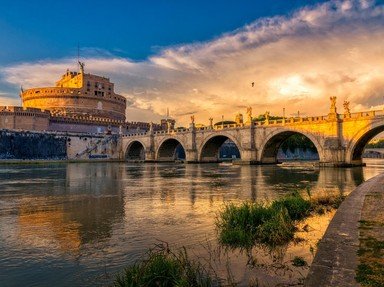Quiz Answer Key and Fun Facts
1. After the public services that began the Saturnalia were over, people went to their homes to continue the celebration privately. Which of the following statement correctly describes the "role reversal" that was experienced at that time?
2. Although it was usually frowned upon and sometimes even outlawed, slaves were allowed to gamble and play dice during the Saturnalia.
3. During the Saturnalia gifts were exchanged. Which of the following would describe the best gift in the eyes of an ancient Roman?
4. For the private festivities during the Saturnalia, a Master of Ceremonies, or "Saturnalicius princeps" was selected, usually by lottery. This practice continued during the Middle Ages in England; at this time, what was the Master of Ceremonies called?
5. Although the Romans did not take trees indoors, they did decorate the ones outside with colored ribbons. What color was NOT used for Saturnalia decor?
6. The ancient Romans lit candles during the Saturnalia. According to the author, Macrobius, who wrote about the festival, what did the light represent?
7. Green wreaths were displayed during the Saturnalia. It is probable that the ancient Romans adopted this practice from either the Greeks or which people, who built the city of Rome?
8. During the private celebrations of the Saturnalia, the male participants would wear a "pilleus". What was a "pilleus"?
9. Which of the following designs could be seen decorating the homes of individuals during the Saturnalia?
10. During *early* celebrations of the Saturnalia, it appears that what event took place at the end of the festival?
Source: Author
ponycargirl
This quiz was reviewed by FunTrivia editor
bloomsby before going online.
Any errors found in FunTrivia content are routinely corrected through our feedback system.

